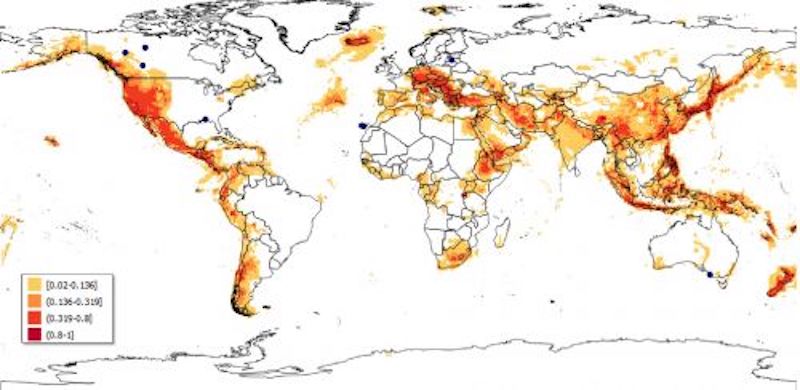Global map to identify areas suitable for geothermal power plants
Under a scientific collaboration between the Institute of Information Science and Technologies (Cnr-Isti) and the Institute of Geosciences and Georesources (Cnr-Igg), researchers have created a global map, showing suitability of an area for the installation of a highly efficient geothermal power plant.
Geothermal energy is natural and renewable, and a large number of countries in the world use it for industrial and domestic processes. However, the efficiency of these plants depends on how well the area on which they are located is suitable for energy production. This suitability is a complex combination of geophysical factors, largely still unknown. To date, the study of the suitability of an area for the construction of a geothermal power plant requires invasive inspections, drilling, related permits and authorizations and large costs. Furthermore, the citizens involved in the areas of inspections and construction ask, with right, transparency on the reasons for choosing their territory for the construction of a power plant and on the benefits and problems, ecological and social, that this can entail.
As part of a scientific collaboration between the Institute of Information Science and Technologies “A. Faedo” (Cnr-Isti) and the Institute of Geosciences and Georesources (Cnr-Igg), the researchers Gianpaolo Coro (Cnr-Isti ) and Eugenio Trumpy (Cnr-Igg) have created the first global map, at 50 km resolution, of the suitability of an area for the installation of a highly efficient geothermal power plant. The map was created over the course of two years, through the combination of geospatial analysis techniques and artificial intelligence, after careful selection and processing of dozens of geophysical parameters potentially related to global geothermal power plants. Every 50 km, the map indicates the probability that the area is suitable for the installation of a high performance power plant. L’ Reliability of the map has been assessed against about 200 new or planned plants worldwide, correctly predicting over 92%.
The model identified the following variables as the most important for assessing the geothermal suitability of a site: carbon dioxide emissions to the ground, earthquake density, altitude, heat flow, sediment thickness and surface air temperature. The optimal combination of these variables was learned automatically by the artificial intelligence model developed by the researchers and was then applied to produce the map. Geothermal suitability of a site: carbon dioxide emission on the ground, earthquake density, altitude, heat flow, sediment thickness and surface air temperature. The optimal combination of these variables was learned automatically by the artificial intelligence model developed by the researchers and was then applied to produce the map.
The results were published in the authoritative journal “Journal of Cleaner Production” (Elsevier). The data and processes used are available for free on the Cnr-Isti D4Science platform, which promotes open science and the repeatability of experiments.
The result of this research has great potential for the geothermal industry, for the population, for decision-making bodies and for geologists. In fact, it saves time and money for preliminary inspections, with obvious benefits for the ecosystems, the landscape and the populations involved. Furthermore, it facilitates communication with citizens through transparency on the reasons for the selection of their territory for the construction of a plant, promoting the debate on the trade off between the protection of the territory and ecosystems and the interests of the geothermal industry.
See also:
- Article in the Journal of Cleaner Production. G. Coro, E. Trumpy. Predicting geographical suitability of geothermal power plants. Volume 267, 2020, pp. 121874
- D4Science infrastructure
- Service / Maximum Entropy Model used in the article
- Service / Data-Interpolating Variational Analysis Model used in the article
- Data and results downloadable from D4Science
Source: CNR


















